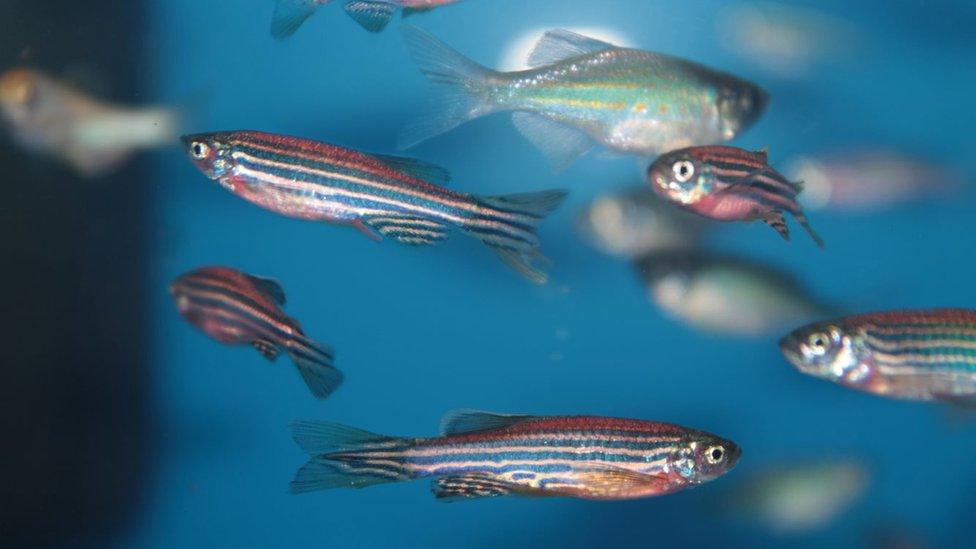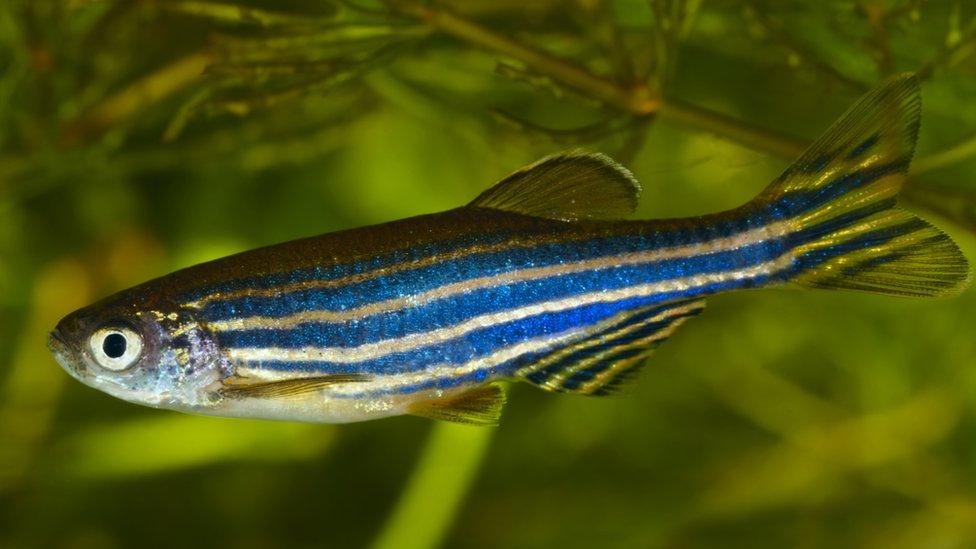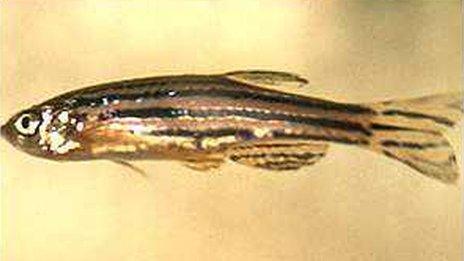Cardiff study sheds light on zebrafish stripe mystery
- Published

A mathematician has shed light on the mystery of how zebrafish develop their distinctive stripes.
Cardiff University's Thomas Woolley simulated how a zebrafish's skin cells "chase each other" before resting to form a pattern.
He found the angles of the chase determine whether the fish develops stripes, broken stripes, polka-dot patterns or no pattern.
The findings have been published in the journal Physical Review E.
Zebrafish begin their lives as transparent embryos, rather than having a pattern in their genetic code, and develop the markings as they become adults - with many possible mutations.

Three pigment cells - black, yellow and silvery - interact with each other until the pattern is reached, with the yellow cells pushing the black ones into position.
Dr Woolley said: "Experimentalists have demonstrated that when these two types of cells are placed in a petri dish, they appear to chase after each other, a bit like pacman chasing the ghosts.
"However, rather than chase each other in straight lines, they appear to be chasing each other in a spiral.
"My new research has shown that the angle at which the cells chase after each other is crucial to determining the final pattern that we see on different types of zebrafish."
- Published25 July 2017

- Published23 May 2013
